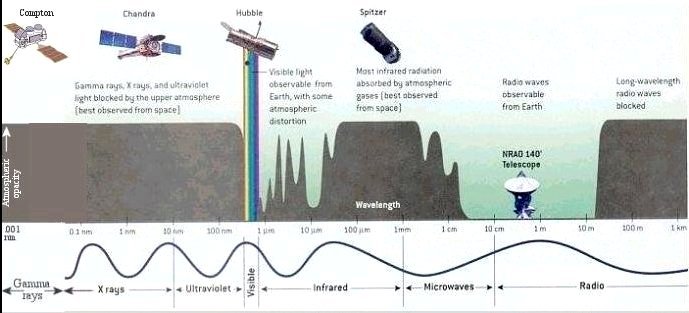atmospheric window

Atmospheric windows in the electromagnetic spectrum. (Note that the spectrum of colors from red to blue is shown in reverse.) Image credit: NASA.
An atmospheric window is a range of wavelengths of electromagnetic radiation to which Earth's atmosphere is largely or partially transparent. All spectral regions are affected to some extent by absorption in the atmosphere but there are two nearly transparent ranges, the optical window and the radio window, and several narrow, partial infrared windows.
The optical window allows through visible light, from red, as far as the A band (see Fraunhofer lines) of molecular oxygen (O2) at 7600 Å, to violet and a little beyond, as far as at the ozone (O3) cut-off at 2950 Å. Shorter wavelengths are blocked by atoms and molecules of oxygen, nitrogen, and other gases, and by geocoronal hydrogen and helium.
The radio window spans a wavelength range from about one millimeter to about 30 meters. Lower wavelengths are reflected by the ionosphere, while shorter wavelengths suffer increasing amounts of molecular absorption.
Several narrow infrared windows exist at micrometer wavelengths, the photometric designations of which are J (1.25 microns), H (1.6 microns), K (2.2 microns), L (3.6 microns), M (5.0 microns), N (10.2 microns), and Q (21 microns). There are also small but usable windows at 350 and 460 microns. Because water vapor is one of the main absorbers of infrared, observatories for studying infrared must be sited in particularly dry or mountainous regions where the effect of water vapor is reduced and/or the atmosphere is thinner.


